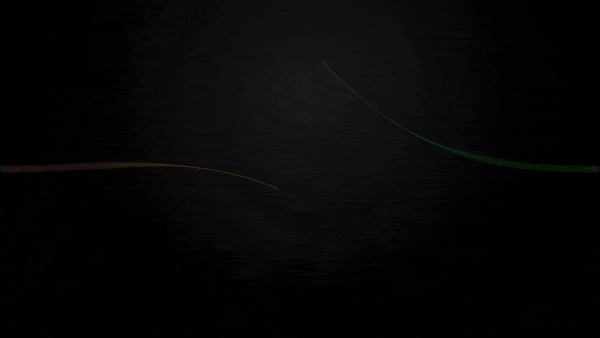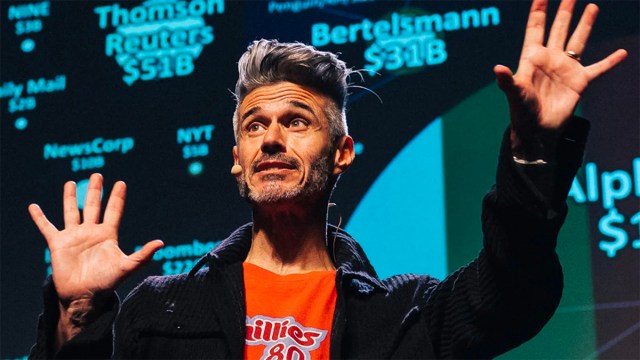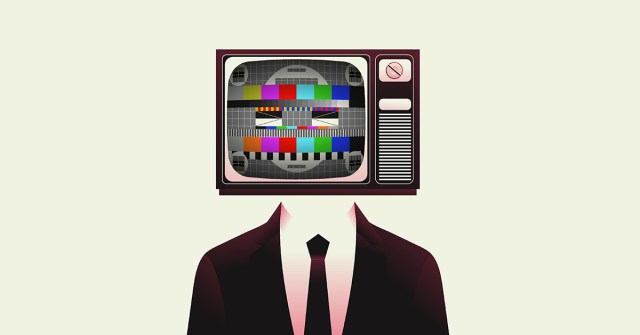
TL;DR
- To be effective, data professionals and researchers must be able to tell a story with numbers and an emotional hook, according to Maverix Insight’s Liz Huszarik.
- Trends can either be “hardcore” — that you see in data and can model — or cultural trends, perhaps observed anecdotally in research labs or on social media.
- Learn more about leveraging and understanding M&E trends at NAB Show New York’s Insight Theater session moderated by Huszarik and featuring a panel of five creatives who understand the importance of data.
If you think data is boring, you’re talking to the wrong people. That’s one of many takeaways from a recent conversation with three Warner Bros. alumna: Liz Huszarik, Brooke Karzen and Tricia Garret Melton.
“I always want to understand why people do what they do,” says Huszarik, former Chief Research & Data Officer at Warner Bros.
She’s turned that desire into a profession, by decoding data for the media and entertainment industry, and Huszarik knows that effective data isn’t limited to presenting clean numbers. “If I didn’t tell a story with the data, if I didn’t make it compelling and have an emotional hook, it meant nothing to” stakeholders and creatives.
“I can take raw data and turn it into stories, and turn it into action, or action steps, that my former colleagues, Tricia and Brooke, can take based on the data,” Huszarik says.
For her part, Karzen says her three decades in the biz (including pioneering unscripted TV and creating “The Bachelor”) have proved to her that “data, research was crucial to both our ability to identify trends in the market, for developing and selling new shows, as well as keeping those long, long running franchises going.”
And Garret Melton, the former Global Kids, Young Adults and Classics CMO, says, “What we do as storytellers, how we engage with our audiences, is so driven by culture… I think it’s so important to be connected and to enter user insights and data smartly.”
You can watch our full conversation (above) or opt to engage in four parts, embedded below.
So how does one use data effectively?
“Data tells you what happened in the rearview mirror. We need to talk to consumers to understand why,” Huszarik explains. “Why did they do that? Why did they behave that way? Why did they make that choice?”
Additionally, it’s helpful to differentiate between a “hardcore” trend that you see in data and can model to predict what’s next, versus cultural trends, perhaps observed anecdotally, at first.
As examples, Huszarik shares two phenomena: cord cutting and children’s technological literacy.
The data-predicted trend, played out like this, Huszarik recalls: “We were following data points, consumer subscription to cable, and … back in 2015, we said by 2023-2024, you’re going to be at fewer than 50% of U.S. homes, having cable in the home house. No one wanted to hear that at the time. But we as an organization, as an enterprise, we had to understand that and what that meant in terms of models.”
On the other hand, Huszarik references an interaction at one of the fan research labs. “This woman said, she was talking about her young, young kids, ‘they can swipe before they wipe.’ … First of all, you’re creative. But second of all, was, like, what is she saying? They’re taking control of a device; they’re never going to have to wait until something is on at a certain time, a certain day of the week. They’re taking control of all of their behavior … while they’re still in diapers, right? … This is where we’re headed.”
Of course, Huszarik notes, “The observational trend, you’re going to try to tease out or substantiate with data. And you know, we do that, but it’s first when you hear it, right, based on a value or perception. But the data driven trends where you can really see and then predict hardcore, are critical.”
But just having the data doesn’t mean you’ll know what’s coming down the pike. Neither does it mean that the decision makers will accept what you’re telling them. But sometimes, data helps save the day (or at least make the right call)!
TV Trends Done Right
The COVID-19 pandemic presented a lot of challenges for television production. It also caused some changes in consumer sentiment, Karzen explains.
She recalls, “We began to realize, both via social media, as well as through information that we were sourcing through Liz and her team, there was this desire, this need, this hunger for nostalgia, which is comfort, by the way.”
To capitalize on that feeling, Karzen says, they looked to Warner Bros. extensive library of titles and franchises. In particular, she cites the popular reunion shows. The “Friends” reunion had been in the works pre-2020, but they also added reunions for Harry Potter, “The West Wing” and other popular franchises “because of the comfort it gave” audiences to tune in.
An earlier trend, Karzen says, resulted in the creation of “Little Big Shots,” hosted by Steve Harvey. They observed that Ellen DeGeneres’ TV clips would go viral whenever she had a cute kid on the show. They spun that idea off into the program which was a 21st century version – also capitalizing on nostalgia – of “Kids Say the Darndest Things.”
Garret Melton also observed nostalgia as a key trend in her sector. It manifested as “parents [who] really wanted to reconnect with their kids” by sharing their interests with their children. For her team, the franchise that they chose to play up was DC Comics and Batman. But rather than a reunion show, they produced all new programming, “Bat Wheels,” targeted to preschoolers (and their caregivers).
“Parents — and dads in particular — were so excited about the opportunity to bring their love for Batman to their four year old, right, in an age appropriate way,” Garret Melton says.
For another of Garret Melton’s properties, TCM, the nostalgia trend, surprisingly, did not work magic. Instead, it leveraged what she calls “recontextualization and the reframing of looking at older films or older movies through a new lens today.”
She says this trend helped to modernize and make relevant the legacy brand, connecting it to new viewers. Garret Melton explains, recontextualization “led us to reposition the brand, where it’s about where culture and classic intersect; led us to a new tagline ‘where then meets now;’ and led us to create a new programming event called ‘Reframed,’ where we played, you know, movies like ‘Breakfast at Tiffany’s’ … But we put context around it. And that was really powerful. Or audiences really, and, frankly, press really responded to that.”
Leveraging Data
Of course, having this information in the right hands doesn’t mean there will be a foregone conclusion.
“I do not believe facts, stats and data change hearts and minds. And I believe you must take that data and tell a compelling story that connects … on an emotional level to actually penetrate and ensure they hear and they leverage your data,” says Huszarik.
To put it another way, she says, “If you cannot edit and tell a simplified, emotionally charged story, then your data doesn’t have the value, the punch and the potential that it might.”
Garret Melton clearly took Huszarik’s message to heart and shared what she calls a politically incorrect parable: “Data, research, is like a lamppost, right? And there are three ways that people tend to use it. One, they use it like a hooker, and they just lean on it. Two, they use it like a dog would, and they piss all over it. Or three, they use it as it’s intended: for illumination.”
There is another option for leveraging data, or at least, another way of looking at its use.
Karzen puts it this way: “Are you going to use that information as a tool or as a weapon?” Data could be weaponized in the boardroom, for example, “ if they were looking for a reason to kill you[r show], be honest.”
Ideally, though, she says that her team would utilize data as one of many tools. And she would take time to soak it in, to feel it rather than analyze the numbers. “The key is moving forward with the things that feel positive, but also don’t use it as a weapon to destroy something that shouldn’t be destroyed,” Karzen says.
In order for that data not to be weaponized, Huszarik emphasizes the relational nature of her work, saying she offers guideposts and support for the executives who are making programming or marketing decisions.
For her part, Garret Melton says, “I think it’s great when research, when data confirms what we believe. But … we need to know what not to do. I actually like it when insights come back that surprise me.”
However, that surprise shouldn’t keep her in the dark forever. “It’s not enough just to tell me, Well, that didn’t work. Help me understand why. Because often, it’s like one little thing, that if you just tweak a certain way, all of a sudden the reception is completely different.”
In order to be ultimately effective, Huszarik says, “There has to be a great deal of trust and collaboration between the research and data teams and the creative teams.”
That trust is earned because “we’re partnering up at the very beginning. And then throughout. Now, I’m not bogging them down with all the numbers and the nuances. But we’re having high level business questions, strategy questions,” Huszarik explains.
Predictions and Hopes
When asked to look forward and forecast exciting or worrying trends, Karzen hedged a bit, noting the uncertainties brewing from the ongoing Hollywood strikes.
However, she ultimately said she was excited to see increased “diversity within storytelling,” behind and in front of the camera, and she hopes that trend continues and expands. For example, two unscripted shows, “Love Is Blind” and “The Ultimatum,” Karzen says, “are both becoming huge hits on Netflix. Those shows, those formats, are allowing for more diversity in the cast.”
However, Karzen is “concerned now that this is going to stop because people are taking chances. Now, they’re betting on the sure bets. I’m afraid of that trend… we’ll take fewer chances. And that’s because of the economy and because of the budget and the impact of what’s been going on from, you know, pandemic and now, you know, the strikes.”
Garret Melton also says she’s cautiously optimistic about increased opportunities for telling “stories we’ve never heard before. Look at the phenomenon of the ‘Barbie’ movie … it was a story told by a woman, about women, about feminism. And the takeaway from that for me — and this actually does get into sort of the research and the data of it all — the takeaway for that, for me, is not that the world is dying for more movies about toys. It’s more movies from [women], about women and women’s issues.”
And again, in the same vein as Karzen, she’s concerned about “our over dependence on franchise” and worried “about the commoditization of entertainment. And that we are seeing a lack of willingness to take risks on truly original” content. After all, “What if nobody been willing to take a chance on ‘The Bachelor’ when it was first pitched? That was revolutionary.”
Huszarik also worries about “potentially truncating opportunities and shutting off voices.”
Additionally, she follows the data and predicts that short form content is the next big play. For kids and families, the “number one platform is YouTube, the number one content is short form. Studios have still not unlocked that.”



